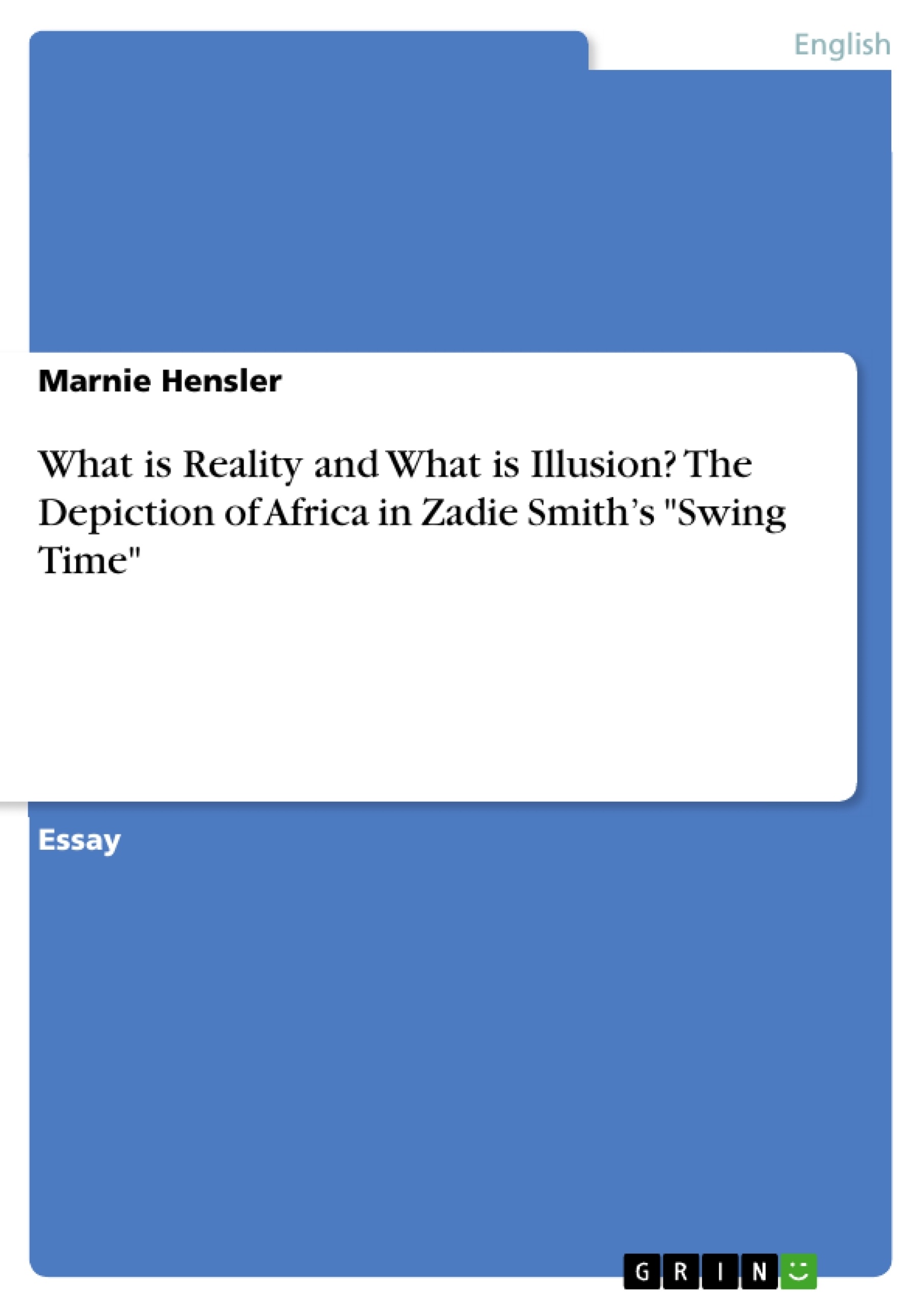This essay explores the depiction of Africa in Zadie Smith's "Swing Time" in connection to Foucault’s concept of heterotopias to find out how (differently) Africa is depicted in the novel and which of the different depictions is the illusion and which the reality.
Foucault’s concept of heterotopia has almost become ‘trendy’ in recent years and has influenced architects, artists and literary critics alike. Defined as “mythic and real contestation of the space in which we live”, heterotopias can exist “outside of all places, even though it may be possible to indicate their location in reality”. Yet what is reality, and what is the "heterotopia", the illusion?
Inhaltsverzeichnis (Table of Contents)
- Introduction
Zielsetzung und Themenschwerpunkte (Objectives and Key Themes)
This essay analyzes Zadie Smith's Swing Time through the lens of Michel Foucault's concept of heterotopia. The main objective is to demonstrate how the ambiguous nature of the Gambian village, presented as a heterotopia, is effectively communicated through the contrasting perspectives of the novel's characters.
- Foucault's concept of heterotopia
- The depiction of Africa in Swing Time
- The contrasting perspectives of different characters
- The ambiguous nature of reality and illusion
- The deconstruction of absolute truths about Africa
Zusammenfassung der Kapitel (Chapter Summaries)
Introduction: This essay explores the depiction of Africa as a heterotopia in Zadie Smith's Swing Time, focusing on how the contrasting perspectives of different characters create an ambiguous representation of the Gambian village. The essay will analyze the village through Foucault's six principles of heterotopia, highlighting the differing experiences and perceptions of the narrator, Aimee, and Fernando.
Schlüsselwörter (Keywords)
Heterotopia, Zadie Smith, Swing Time, Africa, Postcolonialism, Illusion, Reality, Perspective, Ambiguity, Foucault.
Zadie Smith's *Swing Time*: A Heterotopian Analysis - FAQ
What is the main topic of this essay?
This essay analyzes Zadie Smith's novel, Swing Time, focusing on the depiction of the Gambian village as a heterotopia using Michel Foucault's theoretical framework. It explores how the contrasting perspectives of the characters contribute to the ambiguous representation of this location.
What is a heterotopia according to this essay?
The essay utilizes Michel Foucault's concept of heterotopia, a space that exists outside of ordinary societal norms and simultaneously embodies multiple, often contradictory, realities. The Gambian village in Swing Time is analyzed as such a space.
What are the key themes explored in the essay?
Key themes include Foucault's concept of heterotopia, the portrayal of Africa in Swing Time, the contrasting perspectives of different characters (particularly Aimee and Fernando), the interplay between reality and illusion, and the deconstruction of simplistic or absolute truths about Africa.
Which characters' perspectives are central to the analysis?
The essay primarily focuses on the contrasting perspectives of the narrator, Aimee, and Fernando, highlighting how their differing experiences and interpretations contribute to the ambiguity surrounding the Gambian village.
What is the essay's objective?
The main objective is to demonstrate how the ambiguous nature of the Gambian village, presented as a heterotopia, is effectively communicated through the contrasting perspectives of the novel's characters. It aims to show how the novel subverts simple narratives about Africa.
What are the key elements of the essay's structure?
The essay includes an introduction, a section outlining the objectives and key themes, chapter summaries (at least the introduction is summarized), and a list of keywords. This provides a comprehensive overview of the analysis.
What are the keywords associated with this essay?
Keywords include: Heterotopia, Zadie Smith, Swing Time, Africa, Postcolonialism, Illusion, Reality, Perspective, Ambiguity, Foucault.
- Quote paper
- Marnie Hensler (Author), 2019, What is Reality and What is Illusion? The Depiction of Africa in Zadie Smith’s "Swing Time", Munich, GRIN Verlag, https://www.hausarbeiten.de/document/1030972


